The best portable induction cooktop
After countless hours of testing, the Duxtop 9100MC came out on top.

By Sharon Franke, Michael Sullivan
This post was done in partnership with Wirecutter. When readers choose to buy Wirecutter's independently chosen editorial picks, Wirecutter and Engadget may earn affiliate commission. Read the full portable induction cooktop guide here.
After putting in more than 60 hours of research and testing, we're confident that the Duxtop 9100MC is the best portable induction cooktop, and a reliable extra burner for small or busy kitchens. This moderately priced model heats quickly and cooks more evenly than the competition. Its easy-to-use interface allows you to choose between a power mode for general cooking and a temperature mode for specific tasks such as frying.
The Duxtop 9100MC also comes with a number of safety features that prevent overheating and alert you if your cookware isn't suitable for induction cooking. Although it has a few crevices around the perimeter, it isn't difficult to clean.
Although we prefer the slightly more expensive Duxtop 9100MC, the IKEA Tillreda cooktop performed well in most of our cooking tests. It boiled 1 quart of water in just over 4 minutes (about 30 seconds faster than the Duxtop) and browned meat very evenly. This model has a totally smooth ceramic-glass surface with absolutely no crevices, which makes it especially convenient to clean. However, we didn't find it quite as easy to use. For starters, the manual is not straightforward, so you have to figure out the programming through trial and error. The buttons are small and difficult to read, and before you can start cooking on the Tillreda you have to press an unlock button. Whereas other burners have pan-size circles to help with cookware placement, the Tillreda has a small circle in the center that you have to match up with the center of your pan.
Why you should trust us
Wirecutter staff writer Michael Sullivan, who wrote the original version of this guide, has reviewed immersion blenders, food processors, and many other kitchen appliances. He also lived for nearly three months without gas while his apartment building underwent emergency gas-line repairs, during which time he cooked on several induction burners.
Sharon Franke, who worked on our 2019 update, tested and wrote about kitchen equipment at the Good Housekeeping Institute for more than 30 years. Before that she spent seven years wielding a knife and wrangling pots and pans as a professional chef in restaurants in New York City.
To better understand what makes a good induction burner, we spoke with several home cooks who live in the US and Europe; some of them have been using induction burners for years, whereas others recently made the switch. Additionally, we read reviews in publications such as Cook's Illustrated and looked at highly rated models on Amazon.com.
Who should get this
Anyone who hosts large parties or holiday gatherings could benefit from having an extra burner to cook on or to keep food warm. If you live in a tiny apartment, you probably have a tiny kitchen and stove to go with it and may find an additional heat source helpful for getting a meal together faster. Plus, it's not uncommon for apartment buildings to shut off gas lines for necessary maintenance work, so having a portable burner in your emergency kit isn't a bad idea. College students living in a dorm most likely don't have access to a kitchen or cooktop, and a small induction burner (provided that such appliances are allowed in the dorm) makes it possible to cook simple meals. If you like to camp (or "glamp"), you may benefit from the convenience of cooking with an induction burner in your camping trailer. For more on the pros and cons of induction compared with other types of portable burners, see the "Induction burners versus conventional gas or electric burners" section below.
Although full-size multi-burner induction ranges are a great permanent option for many homes, for this guide we focused on portable countertop models.
To cook with induction, you need compatible cookware, specifically anything that contains iron, including magnetic stainless steel or cast iron. A final important note: If you have a pacemaker, most manufacturers recommend consulting your doctor before operating an induction burner.
How we picked
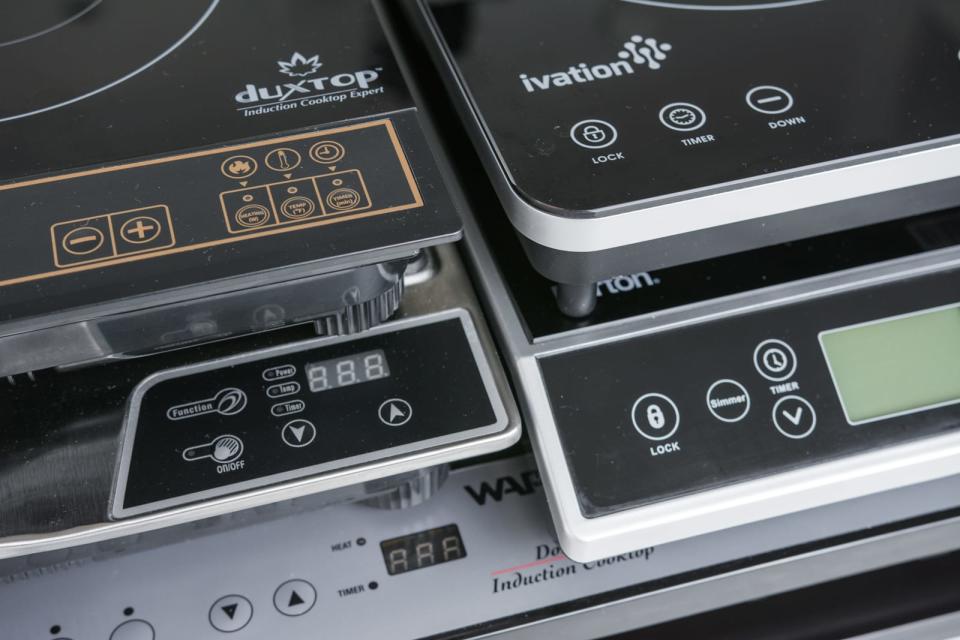
For our 2019 review, we looked for new or updated single-burner induction cooktops. Single induction burners are very efficient because they use a full 1,800 watts at their highest heat setting, whereas dual burners split 1,800 watts between two burners if both are in use. As a result, we found that dual burners are less powerful overall, so we ruled them out for further updates to this guide.
To decide which models to test for 2019, we read the latest reports from other review sites and looked at the best sellers on Amazon and other retailer sites. We also paid close attention to reader comments as well as Amazon customer reviews, noting the features that people loved or hated. Taking all of that into consideration along with our past research, we established the following criteria for a good portable induction cooktop.
Wide range of heating options
We looked for induction burners that offered a range of heat settings so that they could maintain a low simmer yet still get very hot to boil water quickly. Having the option to switch between power levels and specific temperatures was also important in our decision: If you're familiar with gas or electric burners, you'll probably be more comfortable using the power settings on an induction burner, but having the option to choose set temperatures is convenient when you need to maintain a specific temperature, such as when you're frying.
Helpful safety features
We wanted models with a cookware-detection feature that can alert you if you don't place a pan on the burner or try to use pans that aren't induction compatible (aren't magnetic), such as copper or aluminum. Also, we preferred models that allow you to lift the pan off the cooktop without its shutting off after a few seconds, which can be particularly annoying when you're tossing vegetables for a stir fry. Most of the models we tested shut off automatically after a specific period of time. Some have lock buttons to prevent you from accidentally changing the temperature or to keep a child from turning the unit on.
Stability
We also took into consideration how stable each model was on a counter. Working with hot pans can be dangerous, so having a stable unit with substantial weight and rubber feet is important. All of the induction burners we tested had feet that prevented them from sliding. However, be sure your counter is clean before operating your burner—greasy countertops can make even the most secure units less stable and prone to sliding around.
Easy-to-clean design
One of the advantages that induction burners have over gas or coil-electric burners is that they are easier to wipe down because they usually consist of one smooth surface. We searched for models that had minimal grooves and crevices where food and grease could build up easily. Ideally, we wanted burners with a single ceramic-glass top.
For our original guide, we tested four single-burner induction cooktops and two dual-burner models. For our 2019 update, we tested an additional four models against our top picks.
How we tested
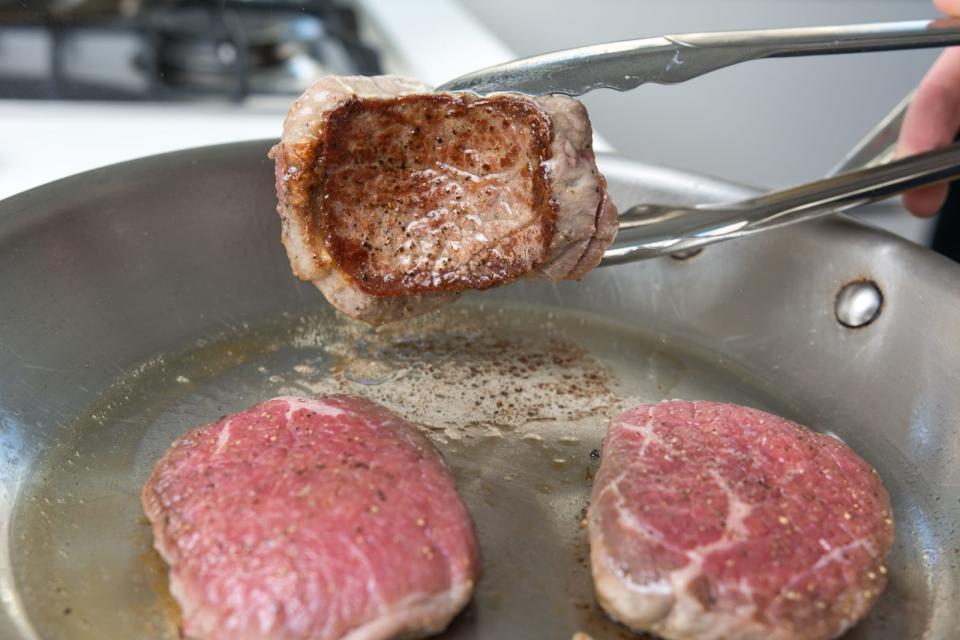
We tested the induction burners using both fully clad pans and models with encapsulated bottoms, since the two types of cookware can perform differently on induction. We started by timing how long 1 quart of water took to come to a boil in both an All-Clad D3 stainless 2-quart clad saucepan and a Fissler Profi stainless 2-quart disc-bottom saucepan. To test how evenly the burners could simmer and how accurately they maintained the selected temperature, we cooked 1 quart of tomato sauce in the Fissler Profi 2-quart saucepan for one hour, measuring the temperature at 10-minute intervals. To see how evenly each burner distributed heat, we heated both an All-Clad D3 10-inch fry pan and a Fissler Profi 9½-inch fry pan, each coated with ½ teaspoon of oil and then dusted with ½ tablespoon of flour, and evaluated the browning. To test how hot each burner could get and how evenly it seared, we cooked sirloin steaks in the Fissler Profi 9½-inch fry pan. Lastly, we determined how evenly the burners sautéed by browning chopped onions in the Fissler Profi 9½-inch fry pan.
The best induction burner: Duxtop 9100MC
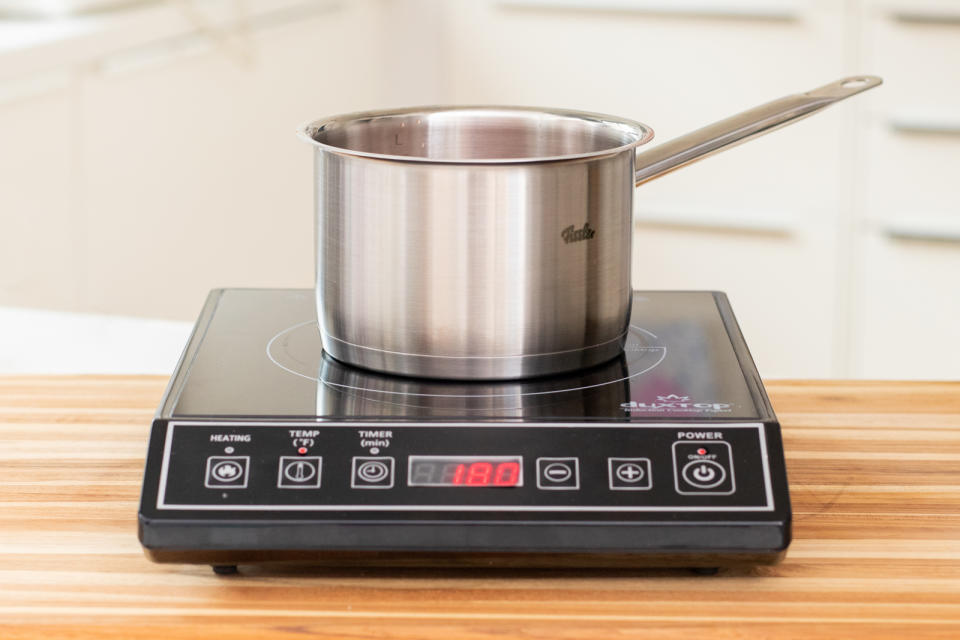
If you need an extra burner for your kitchen, the reasonably priced Duxtop 9100MC is the best induction cooktop we tested. It has a control panel with large, easy-to-read buttons that allow you to very simply adjust the power mode, temperature, and timer. The Duxtop cooked more evenly than other models we tested. In addition, it comes with a number of user-friendly safety features, including those that can prevent overheating or alert you if you accidentally use the wrong kind of pan.

The Duxtop 9100MC has a straightforward interface, with controls that allow you to choose between the power and temperature modes. The power mode, with 15 settings ranging from 200 to 1,800 watts, is ideal for situations when specific temperatures aren't necessary, such as when you want to quickly bring water to a boil or sauté vegetables. The temperature mode has 15 preset temperatures ranging from 140 to 460 degrees Fahrenheit. When we simmered tomato sauce, the 9100MC kept it at a consistent temperature for an hour, although at about 10 degrees lower than the 180 °F setting we had selected. We had similar results on the more expensive Duxtop 9600 and Max Burton 6400 models, but other cookers we tested could not hold steady temperatures. You can set the 9100MC's timer for up to 170 minutes on both the power and temperature modes, and the appliance automatically shuts off the burner when the time is up. If you don't use the timer, the unit shuts off after two hours.
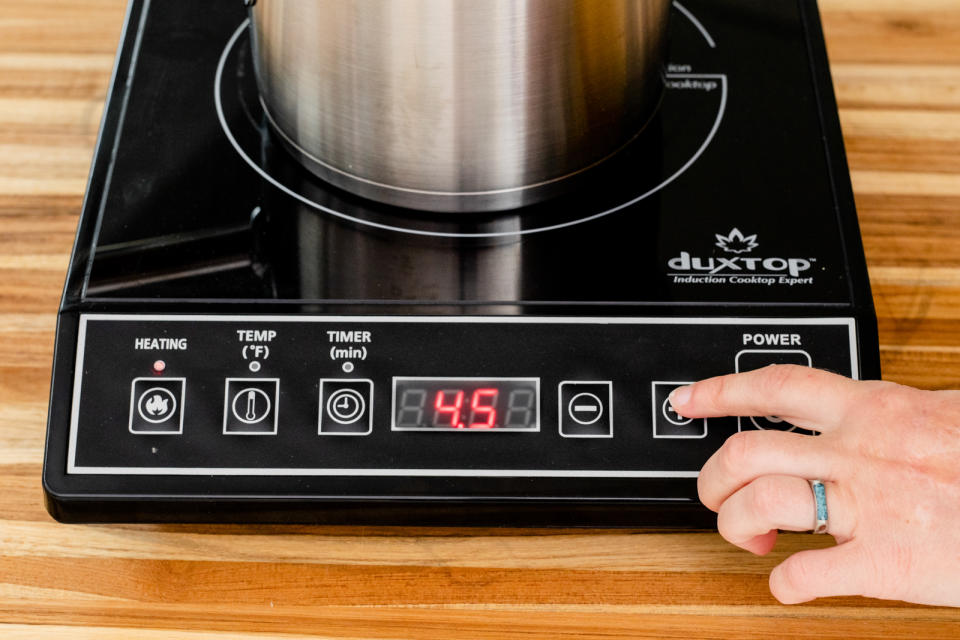
In our tests of the Duxtop 9100MC, 1 quart of water came to a boil in just under 5½ minutes in a disc-bottom pan and took about 30 seconds longer in a clad pan. Although the 9100MC wasn't the fastest model we tested, for the most part the differences in boiling times between burners varied by only about a minute. In our flour test, the 9100MC heated evenly, allowing for deep browning across the entire bottom of our Fissler Profi 9½-inch fry pan and a smaller circle of browning in our All-Clad 10-inch skillet; this result was similar to what we saw from every induction burner we tested. Onions sautéed fairly evenly without scorching and required less stirring than on other burners. When we seared a sirloin steak, it came out with a deep-brown crust.
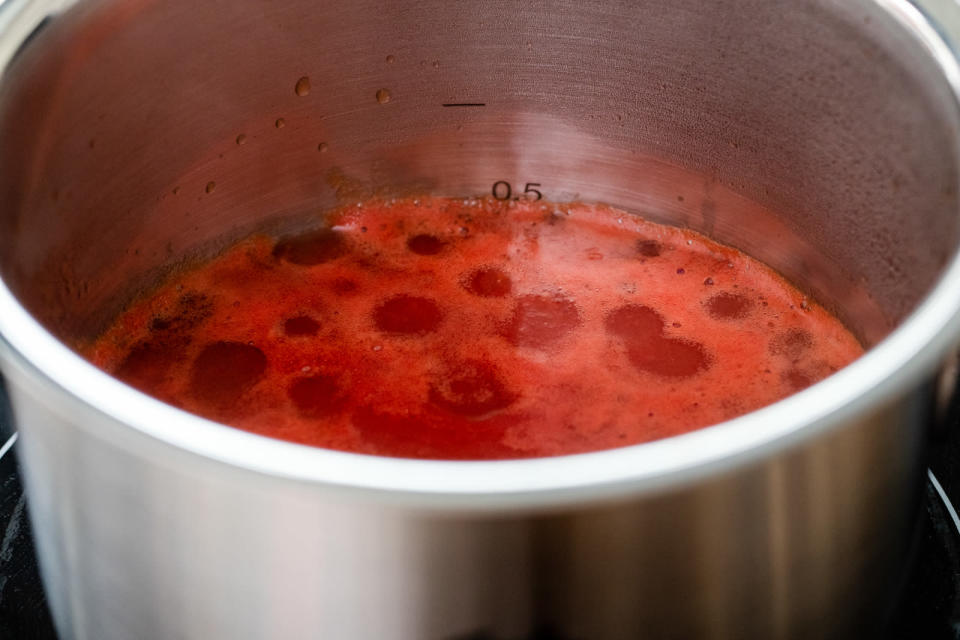
The control panel on the Duxtop 9100MC is sloped downward, which means you won't risk heating and damaging the controls when using a large skillet; the design also makes them easier to access. This is an improvement over the panel on the Duxtop 8100MC, our previous top pick, where the controls are on the same plane as the heating element.
If you try to use incompatible cookware, the pan-detection feature on the 9100MC shows "E0" on the digital screen and beeps to alert you. Although the appliance also beeps whenever you lift the pan off the cooktop, the burner won't shut off for up to a minute, so you can toss vegetables in a pan without having to restart it. The 9100MC comes with a helpful user manual that includes an error-code chart to help identify any problems that may arise, including overheating or an improper voltage supply.
Flaws but not dealbreakers

The rim around the perimeter of the Duxtop 9100MC collects grease and thus requires some detail work during cleaning. This is a minor annoyance, however, and the cooktop and control panel are both easy to wipe clean.
Like all induction burners, the 9100MC has a cooling fan that runs while the appliance is on, which can be somewhat noisy. Although it is louder than the fan on the Duxtop 8100MC, it isn't as noisy as the fan on the Cuisinart model we tested. It's about as noisy as a small tabletop fan.
Runner-up: IKEA Tillreda

Although we liked the Duxtop 9100MC the best, the IKEA Tillreda Portable Induction Cooktopwas the fastest at boiling water in our tests; it's also a bit less expensive, particularly if you can buy it in an IKEA store and avoid shipping costs. It has a glass ceramic surface that includes a touchscreen control panel with absolutely no grooves or crevices, making it a breeze to clean. However, the controls are not as easy to see as on other burners, and centering the pan over the coils is a little trickier.
Like the Duxtop 9100MC, the IKEA Tillreda allows you to choose between a power mode (it has 10 settings, ranging from 60 to 1,800 watts) and a temperature mode, but it offers fewer preset temperature options, with only 10 temperatures (from 140 to 450 degrees Fahrenheit) versus the Duxtop's 15.
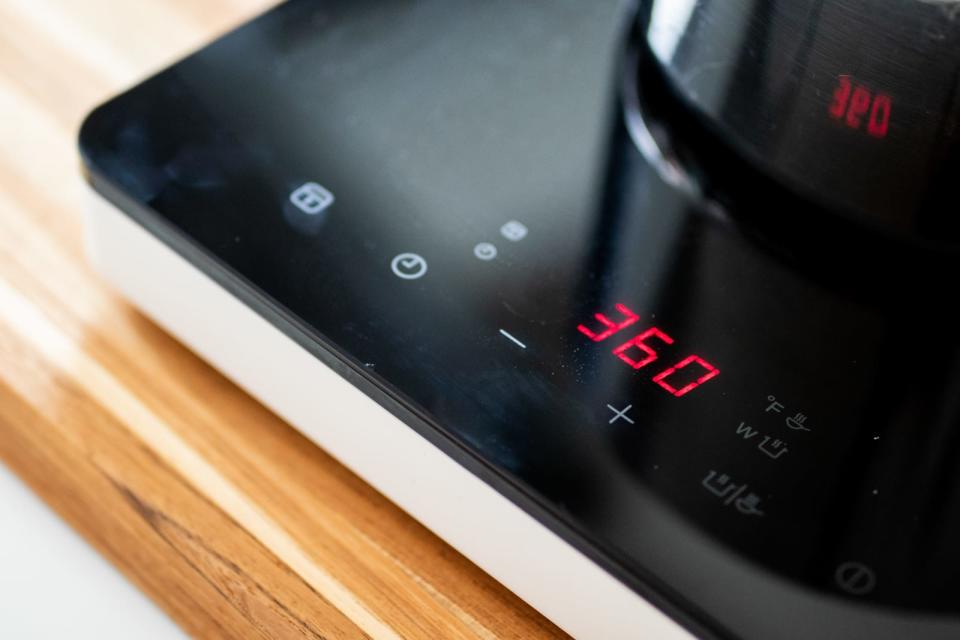
In our tests the IKEA burner brought 1 quart of water to a boil in just over 4 minutes with a flat-bottom saucepan and took only 3 seconds longer with a clad pan, finishing over a minute faster than the Duxtop 9100MC. As did every burner in our review, the Tillreda browned the entire surface of our greased and floured disc-bottom skillet, but only the center of our clad pan. It also browned a steak well, but during simmering and sautéing it had trouble keeping a set temperature—instead, the food got steadily hotter, requiring us to maintain a vigilant eye and regular stirring to prevent scorching or burning.

This model has more safety features than any of the other burners we tested. It has a child lock that you have to deactivate by holding a button for several seconds before you can even program it to start heating. You can also use the lock to prevent accidental changes to the setting. If you don't put a pan on a burner or if you use the wrong type of cookware, it alerts you by beeping. The Tillreda has a 24-hour timer and automatically shuts off after two hours when you aren't using the timer.
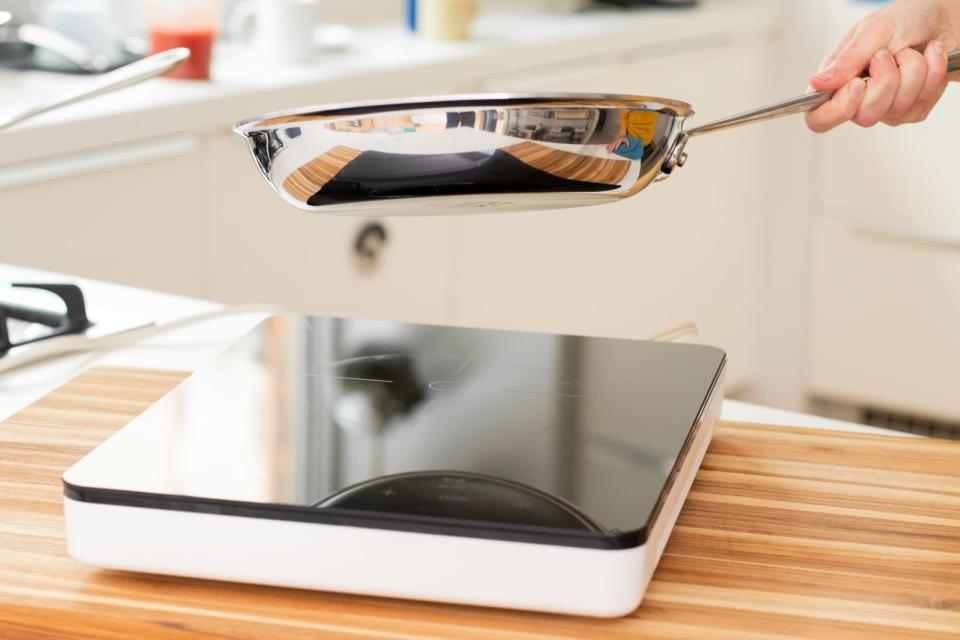
In our tests, whereas the manuals that came with other models clearly explained their use and care, the Tillreda's was confusing; we needed to experiment a bit before we got the hang of programming the burner. Although the child lock is a handy safety feature, you have to depress it for a few seconds to get started once you plug the unit in. And whereas every other cooktop we tested has a large circle on the surface to show you exactly where to place your pan, the Tillreda offers only a small circle in the center surrounded by four lines, a design that makes it a little trickier to put your pan precisely over the magnetic coil.

Induction burners versus conventional gas or electric burners
Unlike gas or electric stovetops, which heat using thermal conduction, induction burners heat using electromagnetic induction. Below the surface of the glass-ceramic top in an induction burner is a magnetic wire coil. Electricity running through this coil creates a magnetic field that causes the electrons in an iron or magnetic stainless steel pot to generate heat. What's unique about induction cooking is that it creates heat directly in the pan instead of on the cooktop surface, which allows for faster cooking and more control over the heat. It also helps keep your kitchen cooler, since cooking with induction loses less energy in the surrounding air.

In our original tests, induction cooktops brought water to a boil in almost half the time of conventional gas or electric burners. The fastest induction burner brought 2 quarts of water to a boil in a 4-quart saucepan in about 7 minutes, versus about 13½ minutes for a conventional gas burner and almost 16 minutes for a smooth electric cooktop.

Most portable induction burners include digital control panels with built-in timers and adjustable power levels or the option to set a specific temperature (anywhere from 60 to 460 degrees Fahrenheit). Although we found that induction burners didn't always cook food at the exact temperatures we selected, electric and gas burners, which you usually control with a simple knob, lack that option altogether.
Aside from offering preset temperatures, most induction cooktops also have a number of safety features, including automatic shutoff, sensors to avoid fires from overheating, and lock settings to prevent temperatures from being changed or to keep children from using the appliance. They're also easier to clean than gas or coil-electric burners, since induction cooktops have a single, flat surface that you can wipe clean using a damp paper towel.
The drawbacks of induction cooking
In addition to being more expensive than a typical portable gas or electric cooktop, an induction burner requires compatible cookware, namely anything magnetic. If you don't have that, and if you don't feel like purchasing new pots and pans, you can buy an induction interface disk (for a review, see Cook's Illustrated, subscription required), which sits on the surface of the burner and allows you to use non-magnetized pans. However, these disks can be expensive—priced anywhere between $30 to $100—and are generally not as effective as compatible cookware.
Induction cooking involves a slight learning curve, too. You're basically cooking by numbers, and you may need a few tries to become familiar with the appropriate settings, especially since the pan will heat much faster on induction than on gas or electric.
As we noted earlier, if you have a pacemaker, consult your doctor before using an induction burner. Also, note that home appliances that use radio waves—such as radios, televisions, and cell phones—can sometimes interfere with an induction burner's electromagnetic field, causing them not to work well. It's best to operate an induction burner away from such devices. The electromagnetic field can also cause a digital instant-read thermometer to malfunction, so to get a temperature reading you'll need to shut the burner off temporarily.
Varying degrees of buzzing can occur as a result of the cookware's exposure to a high magnetic field. The sound varies depending on the type and quality of the cookware or the burner––fully clad cookware tends to buzz most noticeably––but the noise can be irritating.
Induction-compatible cookware
Since an induction burner transfers heat through a magnetic field, it requires cookware that contains iron, such as cast iron or magnetic stainless steel. Copper, aluminum, glass, ceramic, and non-magnetic stainless steel (including 18/10 and 18/8) cookware doesn't create the necessary magnetic field. If you're unsure whether your cookware is compatible, test it with a magnet from your fridge—if the magnet sticks, the pan will work. (Note: Wirecutter's picks for saucepans, skillets, cast-iron pans, and Dutch ovens are all fully compatible with any induction burner, as is one of our picks for nonstick pans.)
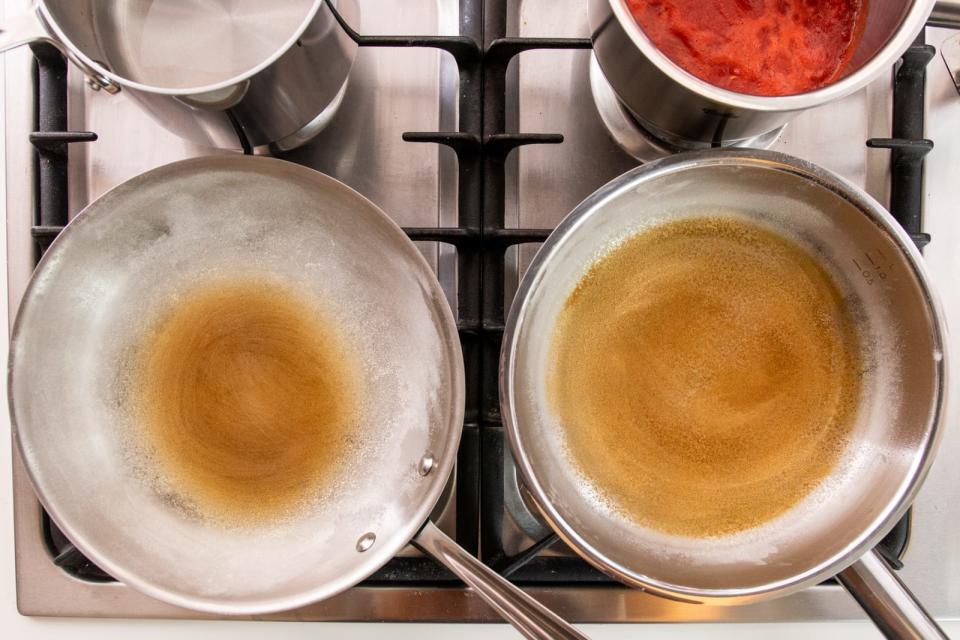
In our cookware review, we recommend fully clad cookware—made from a single piece of aluminum sandwiched between stainless steel, with sides as thick as their bottoms—because we found that it heated more evenly in our tests on gas ranges. But in our induction cookware tests, cookware with an encapsulated bottom––a thick disc bonded to the base––boiled water faster and heated more evenly across the entire surface of the skillet, cooking food faster and more evenly.
Scott Misture, professor of materials science and engineering at Alfred University, told us in an interview that his guess was that the pans with an encapsulated bottom performed better because they had a thicker layer of aluminum in their base, which more evenly distributed the heat generated in the pan's thin outer layer of steel. In our testing with encapsulated-bottom cookware, we used and liked the Fissler Profi 2-quart saucepan and the Fissler Profi 9½-inch fry pan; we plan on testing cookware specifically for induction cooking in the near future.
If you already own induction-compatible clad cookware, we suggest starting with that, no matter the type. But if you use your induction cooktop often and find that your cookware isn't heating evenly, you can then consider investing in a few new disc-bottom pans.
Although you can use cookware with a diameter greater than the single or multiple circles on the burner, the portion of the cookware that is not over the induction coils will heat up only by conduction from the center of the cookware. If you use a large pan, you'll have to stir more often, and cooking times will be longer.
Care and maintenance

Before cleaning the surface of an induction burner, always unplug the cooktop and allow it to cool completely. In most cases a damp paper towel or nonabrasive sponge is all you need to wipe the surface clean. For food spills that are difficult to remove, use a damp paper towel with a mild soap and wipe the surface clean in a circular motion. Never use harsh chemicals or abrasive sponges on the surface of the cooktop—doing so can mar the surface. It's best to clean the surface after each use, otherwise you risk staining or discoloring the glass top. It goes without saying that you should never submerge the burner in water. Also, be sure the cooktop's surface is completely dry before operating.
Avoid placing cooking utensils on the surface of the cooktop, especially if they are made of magnetic metals. Also, never move the unit while it's hot or when pots or pans are on top of it. If for some reason the cooking surface cracks, immediately turn off the burner and contact the manufacturer for repairs. To avoid damaging the cord, be sure to keep the outlet and plug far enough away from the cooking vessel.
Always allow enough air to circulate around the exhaust vent (which is usually located toward the back of the unit). Most manufacturers recommend a clearance of at least 4 to 6 inches. If buildup occurs near the exhaust vent after prolonged use, some manufacturers suggest using a vacuum cleaner attachment to remove debris.
What to look forward to
For our next update, we'd like to consider the Tasty One Top, which connects to a recipe app from BuzzFeed's Tasty. Although the One Top launched in 2017, it was being updated at the time of this review and was unavailable for testing. It features a temperature-control system and a probe thermometer that looks similar to the Control Freak Induction Cooking System, but it costs a lot less at around $150.
The competition
The Duxtop 8100MC, our former top pick, continues to be a solid, well-priced pick. However, although we found that it boiled relatively quickly, coming in second only to the IKEA Tillreda, it didn't cook as evenly as the upgraded Duxtop 9100MC. And unlike the newer model, it doesn't have a slanted control panel, so it's trickier to use with oversize cookware.
We no longer believe that our previous upgrade pick, the Max Burton 6400 Digital Choice Induction Cooktop, is worth paying extra for. It didn't distinguish itself in comparison with the Duxtop 9100MC in this round of cooking tests. And once again we found it annoyingly noisy and difficult to clean because of crevices around the edge. The "boil" function, which allows you to bring water to a boil at the touch of a button, is a convenience but not enough of one to justify the cost. This burner also has a "simmer" function, but it's preset to 100 degrees Fahrenheit, well below the point of simmering.
The Duxtop 9600LS is significantly pricier than our top recommendation, the Duxtop 9100MC, and currently double the price of the 8100MC. It heated fairly evenly in our tests, and it offers a choice of 20 heat settings and 20 temperature settings for fine-tuning. It has a one-touch boil button, a keep-warm setting, and a lock to prevent someone from changing the temperature. However, we don't think these extras are worth the higher price tag.
Although the Cuisinart Induction Cooktop (ICT-30) is the most expensive model we tested, it has the fewest features. It cooks only by the heat setting, not by specific temperatures, and it has only eight settings. Even on the lowest setting, it couldn't keep our tomato sauce at a simmer, scorching it instead.
Although the Control Freak Induction Cooking System by Breville and PolyScience is intended for professional restaurant use, we wanted to see how well it compared to the cheaper models we tested. As its name implies, the Control Freak offers unparalleled temperature control, ranging from 77 to 482 degrees Fahrenheit. The probe thermometer, which reads the temperature of liquids inside a saucepan, was extremely accurate in our tests. This model also boasts other helpful features, including a programmable timer and the capability to save preset temperatures for specific cooking tasks. Despite its array of bells and whistles, the interface on this model is surprisingly intuitive. Also, we love that the Control Freak doesn't beep when you lift a pan off the surface to toss ingredients. This model was by far the best we tested, but at a whopping $1,800, it isn't practical or affordable enough for home use.
The Ivation 1800 Watt Portable Induction Cooktop has a full ceramic-glass top that was a snap for us to clean. However, this model could not bring water to a boil and flashed "E1" on the digital display after only seven minutes on power setting 10. According to the user manual, "E1" means that the burner is overheating, the fan is not working, or the sensor has failed.
Although the Max Burton 6200 Deluxe Induction Cooktop did well in our 2018 tests, its grooves were more difficult to clean than those on the Duxtop 9100MC and the Max Burton 6400. It also beeped loudly each time we pressed a control-panel button.
The NuWave Precision Induction Cooktop has a good rating on Amazon at this writing, but we had a bad experience with the company's aggressive customer service representatives, who failed to answer our detailed questions about their products.
This guide may have been updated by Wirecutter. To see the current recommendation, please go here.
When readers choose to buy Wirecutter's independently chosen editorial picks, Wirecutter and Engadget may earn affiliate commissions.
